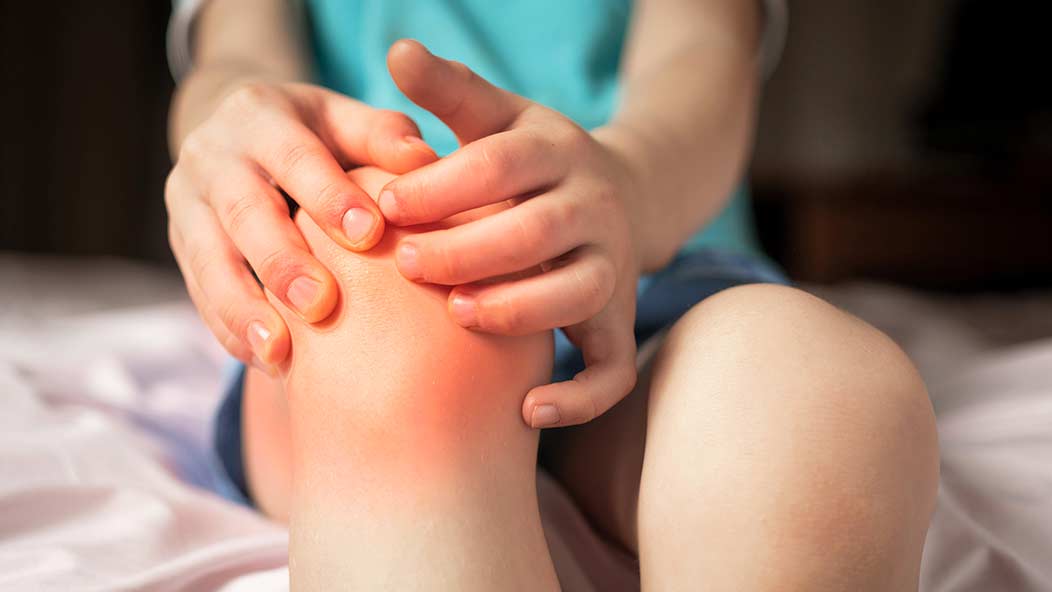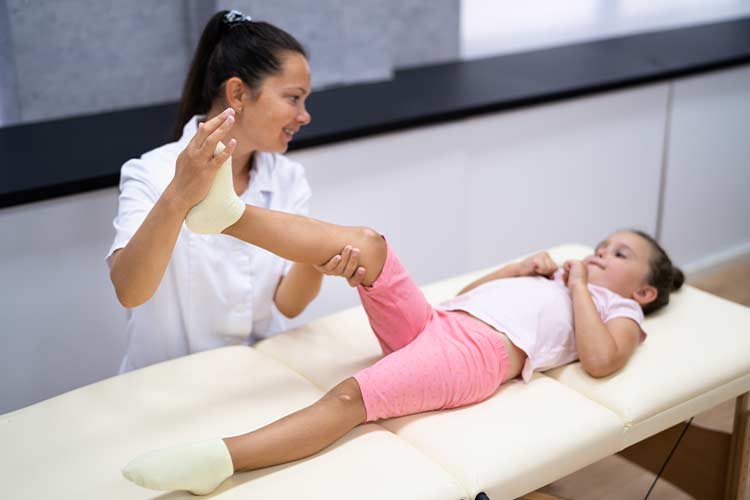Join Our eNewsletter!
Subscribe to our monthly newsletter to receive encouraging advice to help you lead a healthy lifestyle.

Children Can Have Arthritis, Too
Arthritis is often associated with adults, and older adults at that, so it may come as a surprise to some to learn that arthritis can also develop in children. An estimated 300,000 children under the age of 16 in the U.S. have juvenile idiopathic arthritis (JIA), a disease marked by joint swelling and stiffness that lasts at least six weeks. Unlike adult rheumatoid arthritis, which is chronic, JIA tends to improve with age, so most children eventually outgrow the condition. Unfortunately, that doesn't mean there aren't lasting effects into adulthood.
As with any type of arthritis, inflammation is caused by an autoimmune disorder that causes the immune system to mistakenly attack healthy cells and tissues. But with JIA, the immune system specifically targets the lining of the joints. This can hinder bone development, limit movement, cause permanent joint damage, and in the case of systemic onset JIA, even affect the organs.
However, studies show that proper treatment can result in more than half of these children achieving remission and avoiding disability.
Symptoms of Juvenile Idiopathic Arthritis
The symptoms of JIA can vary by child and by the type of arthritis they have. Symptoms may only be present during flare-ups, or they may be constant.

Common symptoms include:
- Swelling, pain, and stiffness in the joints, particularly knees, hands, and feet and often in the morning or after taking a nap
- Swollen joints that are often warm to the touch or cause redness on the skin
- High fever (often 103 degrees or higher) with systemic JIA that usually occurs during a flare-up or in the afternoon or evening
- Light red or pink rash that comes and goes and typically appears when the child is feverish
- Decreased appetite
- Growth issues that may include bones growing too slowly, too quickly, or unevenly
- Inflammation of the eye and blurred vision
- Fatigue
- Swollen lymph nodes
Diagnosing Juvenile Idiopathic Arthritis
Because JIA symptoms can be similar to those of other conditions, doctors usually don't diagnose JIA until they rule out other conditions first. If your child has been experiencing joint pain, stiffness, or swelling for at least six weeks, your pediatrician may do the following:
- Ask about your child's symptoms and when they began
- Review your family medical history
- Check your child's skin, particularly on the joints, for rashes, redness, and other changes
- Observe your child's movements to check for signs of trouble walking and moving
- Shine a light into your child's eyes to check for inflammation
- Examine your child's lymph nodes and abdomen for signs of swelling or pain

After other conditions have been ruled out, your doctor may order blood tests that could include:
- ESR/sed rate and C-reactive protein (CRP) - Used to measure inflammation or inflammatory markers, which are often high in children with JIA
- Autoantibodies - b>Detects antibodies that target cells and tissues, which can signify an autoimmune disorder
- Antinuclear antibody (ANA) - Checks for a positive ANA result, which can indicate a higher risk of developing eye inflammation in children with JIA
- Other lab tests - May include liver and kidney function tests and complete blood count (CBC), which can detect certain factors that signal inflammation
Your child's doctor may also order imaging tests, such as X-rays, ultrasound, and MRI, to visualize bones and joints.
If your doctor does diagnose your child with JIA, they may refer you to a Rheumatology specialist who can determine what type of arthritis your child has (there are multiple types, each with distinct features) and then develop a treatment plan.
Treating Juvenile Idiopathic Arthritis
In most cases, with early and proper treatment, JIA goes into remission after the child reaches adulthood. The goals with any JIA treatment plan are to:
- Control inflammation
- Reduce pain and stiffness
- Prevent joint damage and preserve joint function
- Prevent organ damage
- Encourage proper physical development
- Achieve remission

Your child's treatment plan may include a combination of the following:
- Medication - Anti-inflammatory and pain medication, disease-modifying and anti-rheumatic drugs (DMARDs), biologic response modifiers, and corticosteroids
- Physical therapy - Techniques that can help relieve pain, improve range of motion, and strengthen muscles
- Monitoring and ongoing care - Regular medical care to monitor how treatment is working and adjustments to treatment as needed
If your child exhibits symptoms of juvenile arthritis, don't delay making an appointment with your pediatrician.








